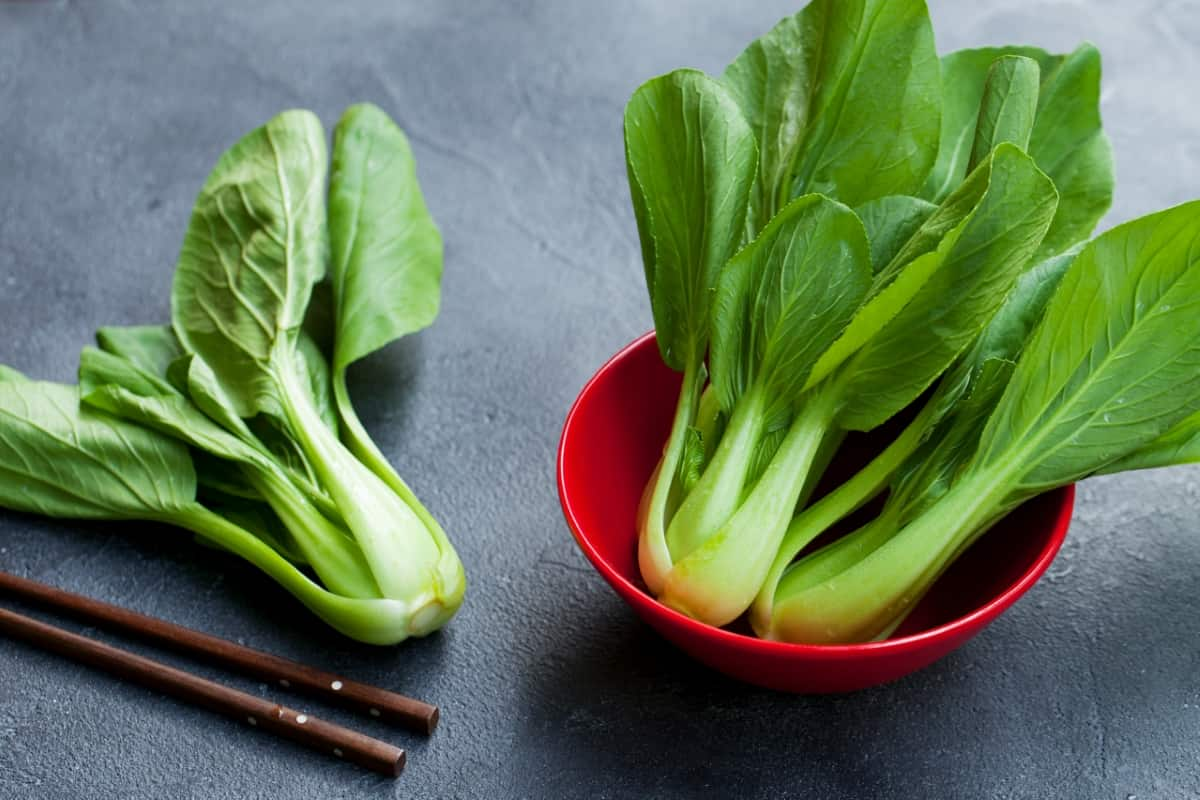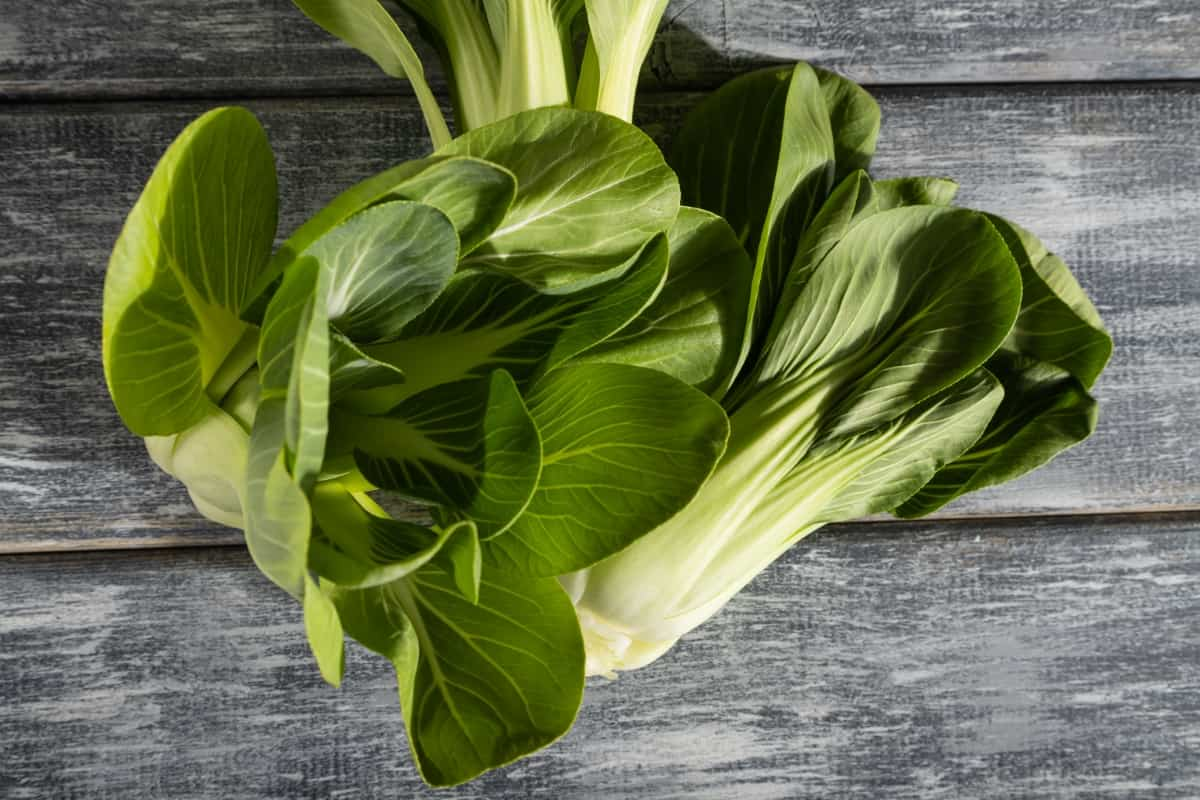Aquaponics combines hydroponics aquaculture in a symbiotic environment. Bok choy, a nutrient-rich leafy vegetable, thrives in aquaponic systems due to its ability to absorb nutrients from water. Setting up an aquaponic system to grow bok choy at home is a rewarding and sustainable way to produce fresh greens. Below are instructions for a DIY Bok Choy aquaponic system setup and Aquaponic Bok Choy growing.

Aquaponic Bok Choy
Setting up Aquaponic System for Bok Choy
For Aquaponic Bok Choy growing, start with a fish tank and connect it to grow beds. Introduce fish like tilapia, as their waste will provide essential nutrients for plant growth. Use a water pump to circulate the nutrient-rich water from the fish tank to the plant-growing beds, where Bok Choy will be planted. Ensure proper filtration to remove solids and maintain water quality.
Choose a suitable growing medium, like expanded clay pellets, to support the plants. Monitor water pH, ammonia, nitrate, and nitrite levels regularly. Incorporate an automatic timer for the water pump to maintain a consistent flood-and-drain cycle for the grow beds. Provide adequate lighting, either natural sunlight or artificial grow lights.
Selecting the Right Fish
When choosing fish for Bok Choy aquaponic farming, consider species like tilapia, trout, or carp, which thrive in aquaponic systems and tolerate varying water conditions. Tilapia are popular for their rapid growth and resilience to fluctuating environments, while trout require cooler water temperatures. Carp are hardy and adaptable, making them suitable for different setups. Additionally, assess factors such as water temperature, pH levels, and local regulations to ensure compatibility with the chosen fish species and optimal conditions for bok choy cultivation in your aquaponic system.
Choosing the Right Bok Choy Variety
- When selecting Bok Choy varieties for bok choy aquaponics, several cultivars thrive well. Consider “Joi Choi” for its compact growth and resistance to bolting.
- “Win-Win” is another excellent choice, known for its uniformity and quick maturity.
- “Shanghai” Bok Choy is favored for its tender, flavorful leaves and adaptability to various growing conditions.
- “Toy Choy” is a dwarf variety ideal for smaller aquaponic setups, offering high yields in limited space.
- Lastly, “Purple Lady” adds aesthetic appeal with its vibrant purple stems and green leaves while still providing excellent flavor and texture.
Maintaining Proper Water pH Levels
In DIY aquaponics for bok choy, maintaining proper water pH levels is crucial for optimal growth. Aim for a pH range between 6.0 and 7.0, as bok choy thrives in slightly acidic to neutral conditions. Regularly monitor pH levels using a reliable meter and adjust as required using pH up or down solutions.
In case you missed it: Hydroponic Bok Choy: DIY Setup, Instructions to Grow, Exploring Water EC to pH

Ensure proper balance between alkalinity and acidity to support nutrient uptake and microbial activity. Test aquaponic bok choy water quality weekly and make gradual adjustments to avoid sudden pH swings, which can stress plants. Consistent pH management fosters healthy plant growth, nutrient absorption, and overall system stability in aquaponics.
Optimizing Nutrient Dosage
For optimal growth of bok choy in aquaponic systems, maintain a balanced nutrient dosage. Aim for nitrogen levels between 20-30 ppm, phosphorus between 10-20 ppm, and potassium between 20-40 ppm. Supplement with iron, calcium, magnesium, and trace minerals as needed to prevent deficiencies.
pH should be maintained from 6.0 to 7.0 for nutrient uptake efficiency. Monitor water quality regularly and adjust nutrient levels accordingly to prevent nutrient imbalances or toxicity. Additionally, ensure proper aeration and water circulation to support plant health and maximize nutrient absorption. Regularly test water parameters and adjust nutrients for bok choy in aquaponics based on plant response for optimal yield and quality.
Monitoring Water Temperature
Bok choy thrives in water temperatures between 18°C to 24°C. Regularly measuring the water temperature ensures it remains within this range, as fluctuations can stress the plants and impact fish metabolism. Use reliable underwater thermometers placed at various depths within the system to get an accurate reading of the water temperature.
Also, employ temperature monitoring systems that alert you to any significant deviations from the ideal range, allowing for prompt adjustments. Proper temperature management not only fosters healthy bok choy growth but also maintains a balanced aquaponic ecosystem, supporting the overall sustainability and productivity of the farm.
Pruning Techniques
Pruning in aquaponic bok choy farming involves the strategic removal of excess foliage to promote healthier growth and optimize yield. Start by regularly inspecting plants for damaged or overcrowded leaves, which can impede airflow and light penetration. Trim these leaves close to the base using sterile pruning shears to prevent disease spread.
Additionally, prune any yellowing or dead leaves to redirect nutrients to healthier plant parts. Encourage vertical growth by selectively removing lower leaves, focusing energy on upper growth where light is more abundant. Avoid excessive pruning, as it can stress the plant and affect overall productivity.
Harvesting at the Right Time
Harvesting at the right time is crucial for optimal yield and flavor. Bok choy typically matures within 45 to 60 days after planting. The best time to harvest is when the leaves are firm, crisp, and vibrant green, and the stems are tender yet sturdy. Overly mature bok choy may develop a bitter taste and tough texture while harvesting too early, which can result in underdeveloped leaves.
In case you missed it: 9 Essential Steps to Grow Potatoes in Aquaponics: Everything About How to Plant and Care

Regular monitoring of plant growth is essential to determine the ideal harvest time. Additionally, harvesting should be done using sharp, clean tools to reduce damage to the plants and reduce the risk of contamination.
Pest and Disease Management
Pest and disease management in aquaponic bok choy farming involves a combination of preventive measures and intervention strategies to maintain plant health and yield. Prevention includes maintaining optimal water quality, pH levels, and temperature to deter pest and disease proliferation. Additionally, implementing proper spacing between plants and maintaining cleanliness in the system can minimize the risk of infestation.
For organic aquaponic bok choy, biological controls such as introducing beneficial insects like lacewings, ladybugs, or predatory mites keep pest populations at bay. Inspect regularly for pests or disease signs, like yellowing leaves or unusual spots, allows for early detection and targeted intervention. Organic pesticides approved for aquaponic systems may be used sparingly if necessary. Prompt removal of infected plants and quarantining affected areas can prevent the spread of diseases.
In case you missed it: 9 Essential Steps to Grow Carrots in Aquaponics: Explore from How to Plant to Harvest

Conclusion
With dedication, patience, and a bit of experimentation in home aquaponics bok choy cultivation, you’ll soon be enjoying delicious bok choy harvested fresh from your aquaponic bok choy growing garden. Not only will you be reducing the environmental footprint, but you’ll also be nurturing a deeper connection to the food you eat and the natural world around you. Happy aquaponic gardening!
- Feed Your Flock for Less: Top 10 Tips to Save on Chicken Feed
- Ultimate Guide to Ossabaw Island Hog: Breeding, Raising, Diet, and Care
- Hatching Answers: The Top 10 Reasons Your Chickens Aren’t Laying Eggs
- Eggs and Economics: Breaking Down the Cost of Raising Backyard Chickens
- Defend Your Greens: Proven Methods to Keep Iguanas Out of Your Garden
- Ultimate Guide to Cinnamon Queen Chicken: A Comprehensive Guide for Beginners
- Ultimate Guide to California Tan Chicken: Breeding, Raising, Diet, Egg-Production and Care
- Ultimate Guide to Marsh Daisy Chicken: Breeding, Raising, Diet, and Care
- 10 Types of Chicken Farming Businesses You Can Start for Profits